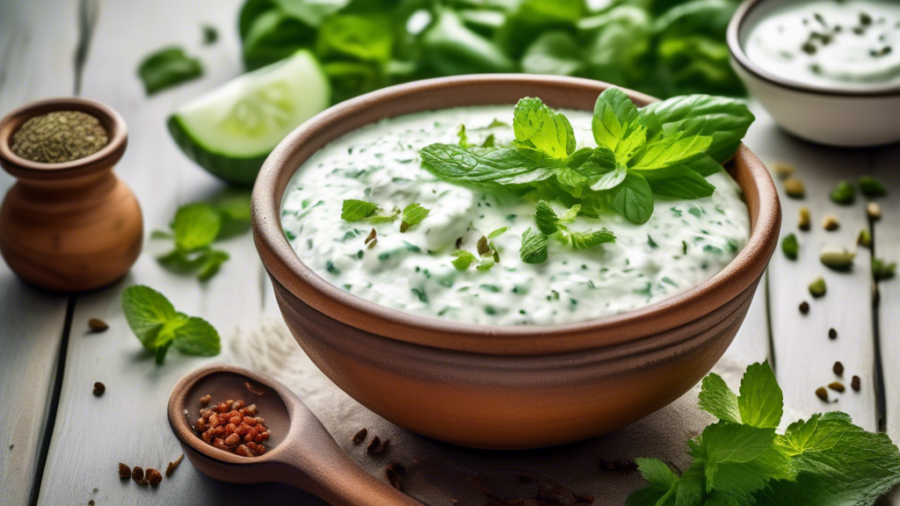Argentina is a country rich in culture, history, and natural beauty. It offers a fascinating blend of customs, landscapes, and experiences that capture the hearts of those who visit. Exploring Argentina’s unique attributes can provide a deeper appreciation of its diverse and vibrant character.

From the bustling streets of Buenos Aires to the serene vineyards of Mendoza, Argentina presents a myriad of wonders for travelers and enthusiasts alike. Learning about these interesting aspects enhances the understanding and admiration for this remarkable South American nation.
1) Iguazu Falls – One of the New Seven Wonders of Nature
Iguazu Falls is a spectacular natural wonder located on the border between Argentina and Brazil. This massive waterfall system is made up of about 275 individual falls. The most famous and striking of these is the Devil’s Throat, reaching a height of 269 feet (82 meters).
Spanning 1.7 miles (2.7 kilometers), Iguazu Falls is the largest waterfall system in the world. The Iguazu River, which forms the falls, flows mostly through Brazil, but most of the falls are situated on the Argentine side. The falls divide the river into its upper and lower parts.
Recognized as one of the New Seven Wonders of Nature, Iguazu Falls draws millions of visitors every year. The area around the falls is rich in diverse wildlife and lush vegetation, making it a haven for nature enthusiasts. The thunderous roar of the water and the mist that rises from the falls create an unforgettable experience for visitors.
2) Buenos Aires – Known for its vibrant nightlife and architecture
Buenos Aires, the capital of Argentina, is famous for its lively nightlife. The city offers an array of options from trendy bars to energetic clubs. It’s common for locals and tourists to enjoy evenings that extend into the early morning hours.
Avenida 9 de Julio, the world’s widest avenue, lights up at night. It showcases some of the city’s best dining and entertainment spots. Another popular area is Palermo, boasting numerous bars and nightclubs.
The architecture in Buenos Aires is equally remarkable. The city is often referred to as the “Paris of South America” because of its European-style buildings.
One standout is the Obelisco, a tall monument in the city’s center. Recoleta Cemetery is also notable, not just for its intricate tombs, but also as a famous tourist attraction.
El Ateneo Grand Splendid, a former theater turned bookstore, is renowned for its stunning interior. It has been consistently ranked among the most beautiful bookstores in the world.
Colorful neighborhoods like La Boca add to the city’s unique charm. With its vibrant streets and historic buildings, Buenos Aires continues to captivate all who visit.
3) Aconcagua – The Highest Peak in the Americas
Aconcagua is a mountain in the Andes range, located in Mendoza Province, Argentina. It is the tallest mountain in both the Western Hemisphere and the Southern Hemisphere. It stands at an impressive height of 6,961 meters (22,838 feet).
The mountain is a popular destination for climbers and adventurers from around the world. Its height makes it a significant challenge, attracting those looking to conquer one of the Seven Summits.
Aconcagua’s first known attempt to reach its peak was made by German explorer Paul Güssfeldt in 1883. Though he did not succeed, his effort opened the way for future climbers.
Despite its height, Aconcagua does not require technical climbing skills. Most routes to the summit are considered to be non-technical, making it accessible to experienced hikers.
Aconcagua’s landscape is stark and majestic. The mountain features glaciers and rugged terrain, contributing to its allure and beauty. It also has historical significance, with ancient artifacts found near its summit.
For those interested in high-altitude trekking, Aconcagua offers an unmatched experience. Its unique position in the Andes and its towering height make it a must-see for climbers and nature lovers alike.
4) Patagonia – Famous for its Stunning Landscapes and Wildlife
Patagonia is a vast region shared by Argentina and Chile. It covers around 260,000 square miles, making it one of the largest regions in South America. The area is known for its majestic landscapes and unique wildlife.
Patagonia’s scenery includes dramatic mountain peaks and vast glaciers. One of the most famous glaciers is the Perito Moreno Glacier in Los Glaciares National Park, Argentina. This 97-square-mile glacier is a major tourist attraction.
Wildlife in Patagonia is diverse and includes many notable species. The guanaco, a relative of the llama, roams the plains. The region is also home to the Andean condor, one of the world’s largest flying birds.
Patagonia’s varied environments support a wide range of ecosystems. From the arid steppes to the dense forests and icy glaciers, each ecosystem hosts different plants and animals. This makes Patagonia a unique destination for nature lovers and photographers.
Many parts of Patagonia are protected areas. These areas help conserve the natural beauty and biodiversity of the region, ensuring that visitors will enjoy Patagonia’s splendor for generations to come.
5) Mate – Traditional Argentine Drink Widely Consumed by Locals
Mate is the national drink of Argentina. It is made from dried leaves of the yerba mate plant. The plant is native to eastern Argentina, Paraguay, and southern Brazil.
Yerba mate is brewed by steeping the dried leaves in hot water. Traditionally, mate is served in a container made from a gourd. This container is called a “calabash.”
To drink mate, locals use a metal straw known as a “bombilla.” The bombilla filters the yerba mate leaves, allowing only the liquid to be sipped.
Mate is not just a drink in Argentina. It carries cultural significance and is often shared among friends and family. This practice strengthens community bonds and fosters a sense of togetherness.
The history of mate dates back to the indigenous people of the Paraná or Misiones forest. Spanish explorers adopted the drink in the 16th century.
By the 17th century, Jesuit priests began cultivating the yerba mate plant. This made it easier to obtain, moving away from traditional foraging methods.
Yerba mate has an acquired taste. Some describe it as earthy and slightly bitter.
Mate is consumed throughout Argentina and other South American countries, including Uruguay and Paraguay. It remains a favorite drink for many due to its rich history and deep-rooted cultural importance.
6) Tango – Originated in Buenos Aires in the Late 19th Century
Tango is a world-famous dance that began in Buenos Aires, Argentina. It emerged in the late 19th century, around the 1880s. The dance was a blend of multiple cultures, with influences from European immigrants, African rhythms, and local Argentine traditions.
Tango was first popular in the lower-class neighborhoods of Buenos Aires. Men often practiced together, perfecting their skills. The dance then started to spread to other social groups and regions.
By the early 20th century, tango had traveled to Europe, capturing the hearts of people in cities like Paris, London, and Berlin. It became a global phenomenon, known for its passionate and dramatic style.
The music that accompanies tango is just as important as the dance itself. It includes instruments like the bandoneón, a type of accordion, which gives tango its distinctive sound. The lyrics often express themes of love, loss, and nostalgia.
Tango didn’t just stay a dance for the streets. It moved into the ballrooms and theaters, becoming more formalized. Today, it’s celebrated worldwide through festivals, dance competitions, and classes. Despite its global reach, its roots in Buenos Aires are always remembered and honored.
7) Perito Moreno Glacier – One of the most accessible glaciers in the world
Perito Moreno Glacier is located in Los Glaciares National Park in southwest Santa Cruz Province, Argentina. This glacier is one of the most popular tourist attractions in Argentine Patagonia. It spans about 250 square kilometers and rises 240 feet above the water.
The glacier is particularly notable for its easy accessibility. Visitors can reach it from the nearby town of El Calafate, which is about 80 kilometers away. There are well-maintained walkways and viewing platforms that allow tourists to get close to the glacier.
One can experience the glacier’s stunning blue ice formations from the safety of the walkways. For the more adventurous, there are guided trekking tours available. These tours let visitors walk on the glacier itself, offering a unique experience.
Due to its location and infrastructure, Perito Moreno Glacier provides an exceptional opportunity for people of all ages to witness a natural wonder. It’s rare to find such a massive glacier that is so easy to visit.
8) La Boca – A colorful and historic neighborhood in Buenos Aires
La Boca is one of Buenos Aires’ most famous neighborhoods. Known for its vibrant colors and rich history, it attracts many visitors each year. The area is especially famous for its brightly painted houses, which have become a symbol of the neighborhood.
El Caminito is the heart of La Boca. This cobblestone street is lined with colorful facades and street performers. It was rejuvenated by Argentine painter Benito Quinquela Martín in the mid-20th century.
La Boca also has a deep connection to tango. Visitors can see tango dancers performing in the streets. It’s a great spot to experience one of Argentina’s most famous cultural traditions.
The neighborhood has a strong immigrant history. Many of La Boca’s early residents were from Italy and Spain. They brought their cultures with them, shaping the neighborhood’s unique character.
Today, La Boca is home to Boca Juniors, one of Argentina’s most popular soccer teams. Their stadium, La Bombonera, is a key attraction. Soccer fans from around the world visit to catch a game and feel the electric atmosphere.
La Boca’s artistic vibe extends beyond its streets. There are numerous art galleries and studios where local artists showcase their work. This makes La Boca a hub for creativity and culture.
9) Argentine Beef – World-renowned for its quality and flavor
Argentine beef is famous for its tenderness and rich flavor. This reputation comes from the way cattle are raised in Argentina. Most of them graze on the fertile pastures of the Pampas, a region known for its nutrient-rich soil.
Argentines have one of the highest beef consumption rates in the world. Each person eats about 55 kilograms of beef per year. This passion for beef shows in their cuisine, especially in asados, which are traditional barbecues.
Argentina is one of the top beef exporters globally, behind only Brazil and Australia. The country exports a significant portion of its beef, despite a 15% tax on beef exports. This high demand underscores the quality and popularity of Argentine beef.
The beef is mostly grass-fed, which gives it a unique taste compared to grain-fed beef. This natural diet contributes to its excellent quality. When cooking, Argentine chefs often use simple seasonings like sea salt to let the meat’s true flavor shine.
With wide recognition for its beef, Argentina’s traditions and techniques have made it a cornerstone in global cuisine. Whether at home or in restaurants, Argentine beef continues to impress meat lovers around the world.
10) Teatro Colón – One of the world’s best opera houses
Teatro Colón is located in Buenos Aires, Argentina. Built over 20 years, it opened in 1908. This historic opera house is renowned globally for its exceptional acoustics and grand architecture.
The theater was designed by Francesco Tamburini, Victor Meano, and Jules Dormal. It is often compared with other famous opera houses like La Scala in Milan and the Royal Opera House in London.
Many of the world’s greatest musicians have performed at Teatro Colón. It features a revolving stage and ample seating capacity.
Recognized as one of the top ten opera houses in the world by National Geographic, it boasts a rich cultural history. Its Italian, French, and Greek architectural influences add to its stunning visual appeal.
Geography and Climate
Argentina is a country marked by diverse landscapes, ranging from mountains and glaciers to tropical jungles. The nation’s climate varies widely, with temperatures changing significantly from north to south.
Geographic Diversity
Argentina is located in southern South America, bordered by Chile to the west and the Atlantic Ocean to the east. It is the eighth largest country in the world and the second largest in South America, after Brazil.
The Andes Mountains run along the western edge, forming a natural border with Chile. These mountains include some of the highest peaks in the world. To the east of the Andes, the country features flat, fertile plains known as the Pampas, which are ideal for agriculture.
In the south, Patagonia presents a stark contrast with its cold, windy climate and rugged terrain. This region includes steppes, deserts, and the southernmost stretches of the Andes, which are covered in glaciers. Meanwhile, northern Argentina hosts subtropical forests and wetlands.
Climate Varies by Region
Argentina’s climate is as diverse as its geography. In the north, the climate is subtropical with hot, humid summers and mild winters. This region includes the Gran Chaco and the Misiones rainforest.
Central Argentina, home to Buenos Aires and the Pampas, experiences a temperate climate with hot summers and cool winters. This region is known for its rich agriculture and is one of the most populated areas in the country.
Farther south, Patagonia has a much colder climate. Winters are harsh, with strong winds and low temperatures. Summers are milder but still cool compared to other regions. The southernmost part of Argentina, including Tierra del Fuego, experiences subpolar conditions, making it one of the coldest areas in the country.
Cultural Richness
Argentina’s culture is a blend of various global influences, with deep roots in European immigration, vibrant music and dance traditions, and a unique mix of culinary practices. These factors collectively shape the nation’s rich cultural landscape.
Influences of European Immigration
European immigration has played a significant role in shaping Argentina’s cultural identity. Starting in the late 19th century, waves of immigrants arrived from countries like Italy, Spain, and Germany.
These new residents brought their languages, traditions, and customs, which integrated into the local culture. Buenos Aires, the capital, showcases European architectural styles. Many cultural events, such as traditional festivals and holidays, reflect European origins.
Names, food, and daily habits in Argentina often bear traces of this European heritage. Thus, the influence of European immigration is evident in the lifestyle, values, and social norms prevalent in Argentina today.
Argentine Music and Dance
Argentine music and dance are vibrant aspects of the country’s culture. Tango, the most famous Argentine dance, originated in Buenos Aires in the late 19th century. It combines elements from African, Indigenous, and European music traditions.
The passionate and dramatic style of the tango has captured global attention and is widely performed and taught worldwide. In addition to tango, folk music like chacarera and zamba reflects the rural traditions of the country.
These dances and music forms are celebrated in festivals and national events, demonstrating the blending of unique cultural elements.
Culinary Traditions
Argentina is renowned for its rich culinary traditions, heavily influenced by European flavors, especially Italian and Spanish. One of the most famous dishes is the Argentine asado, a barbecue featuring various cuts of beef, sausages, and other meats.
The tradition of sharing yerba mate, a caffeine-rich tea, highlights the country’s social customs. Sweets like dulce de leche and pastries such as alfajores are popular treats.
The prevalence of fresh, high-quality ingredients and distinct flavors makes Argentine cuisine a celebration of its diverse cultural influences. These culinary traditions are an essential part of everyday life and special occasions, reflecting the nation’s cultural wealth.
Historical Background
Argentina has a rich history that includes ancient indigenous cultures, centuries of Spanish rule, and a complex journey toward modern independence.
Pre-Columbian Era
Before the arrival of Europeans, Argentina was home to many diverse indigenous groups. The Inca Empire extended into the northwest region, influencing local culture and trade. Indigenous peoples like the Mapuche, Guarani, and the Diaguita established their own societies, each with unique customs and languages.
These groups engaged in agriculture, hunting, and trade. They built complex social structures and created significant works of art and architecture. Pottery and textiles from this era provide a glimpse into their advanced craftsmanship.
Colonial Period
In the early 16th century, Spanish explorers arrived, leading to the colonization of Argentina. By 1580, Buenos Aires was established as a key colonial outpost. Spanish rule lasted for nearly three centuries, marked by the extraction of resources and the imposition of European culture and religion.
Colonial authorities established missions throughout the region. These missions aimed to convert indigenous peoples to Christianity and often disrupted native life. Over time, a blend of cultures emerged, setting the stage for Argentina’s diverse heritage.
Modern Argentina
Argentina declared independence from Spain in 1816. Leaders like Manuel Belgrano and José de San Martín played pivotal roles. The country faced internal conflicts and external threats during its early years, but it gradually stabilized.
In the 20th century, Argentina underwent significant political and economic changes. The rise and fall of leaders like Juan Perón influenced the nation’s direction. Today, Argentina remains a vibrant democracy with a rich cultural legacy, shaped by its storied past.





















